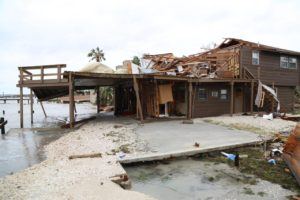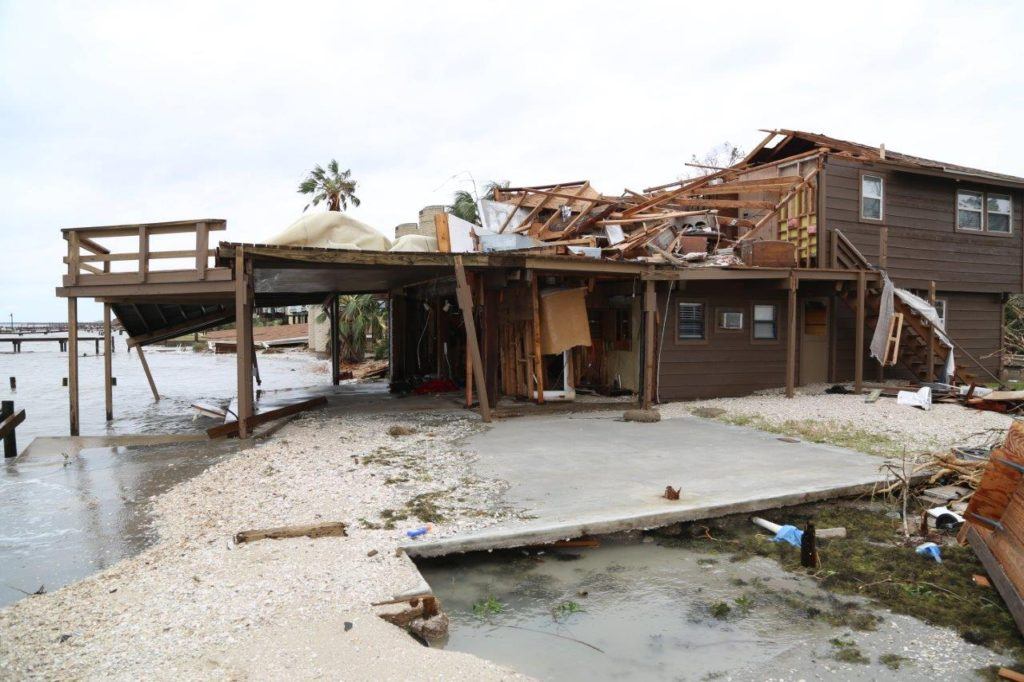Texas has been awarded billions in federal aid to help recover from Hurricane Harvey and the devastating flooding that followed, but it’s unclear how the state is spending its share of the money.
State records don’t indicate which contracts are storm-related, making fund tracking – and spending accountability – nearly impossible.
Disaster recovery experts say the lack of transparency in Texas could hinder coordination, encourage fraud and squander an opportunity not only to rebuild after one of the country’s costliest natural disasters, but also to mitigate the risks of the next monster storm.
Here’s a look at where some of the money has gone and what’s not being tracked:
FEDERAL ASSISTANCE
Texas has received more than $11 billion in federal disaster aid since Hurricane Harvey hit the state’s Gulf Coast in late August. Republican Gov. Greg Abbott has appealed for $61 billion more in federal assistance, largely for public infrastructure projects.

The bulk of the federal money spent so far has gone through federal agencies, which – unlike Texas agencies – maintain public, frequently updated databases of their spending. The Federal Emergency Management Agency also provides daily updates.
Those records show that as of Dec. 12, FEMA paid $1.47 billion for hotel bills and emergency home repairs; the Small Business Administration issued $2.84 billion in low-interest loans to homeowners and businesses; and the National Flood Insurance Program paid $6.87 billion in flood insurance.
The federal government also maintained a centralized database to search for contracts awarded during the storm.
HOW TEXAS SPENDS FEDERAL AID
It’s much harder to track federal money being distributed through the state.
So far, more than $500 million in federal dollars have gone directly to Texas to reimburse state agencies and local jurisdictions for debris removal, power restoration and emergency infrastructure repairs. But how the money has been spent is unclear.
Abbott, who divided funding coordination among several state agencies, appointed a commission to help hard-hit cities, towns and counties get reimbursed by FEMA for public projects. However, the commission isn’t tracking the funds. Instead, local authorities are responsible for transparency and for holding onto receipts in case of a federal audit, said commission spokesman Laylan Copelin.
“We’re on the service end of things, we’re not really in the money trail,” Copelin said.
Abbott spokesman Matt Hirsch said the state currently had no centralized, comprehensive funds tracker that would allow the public to monitor recovery and rebuilding spending. He said one is in the works, though he didn’t know what it would entail or when it would come online.
STATE PUBLIC ASSISTANCE
Another murky side of Texas’ storm spending involves state contracts awarded to private companies for services or products, such as food or portable shower rentals for first responders.
About $1.7 billion in state funds were spent by state agencies on storm recovery and rebuilding through October, according to a report by the Legislative Budget Board. But how each agency spent the funds is unclear. For example, the board’s report shows that the Department of Health and Human Services spent more than $1 billion, but there’s no breakdown of where or when the money was spent.
There’s also no specific code or marker in a public database of state contracts to indicate which contracts are related to Harvey, according to Jacob Pugh, who oversees the database on behalf of the board, which provides Texas lawmakers with budget recommendations and fiscal analyses.
“There’s no way to say, ‘Just give me Harvey contracts,’ because there’s no identifier for that,” said R.J. DeSilva, a board spokesman. “You could do a word search for Harvey or hurricane. But the contract description needs not necessarily have those words in it.”
The database also doesn’t reveal whether any individual contract was paid for with state or federal funds, or a combination of the two, DeSilva said.
The database is maintained by the Texas Comptroller’s Office. Hirsch, the governor’s spokesman, said the office is working on coding that would distinguish Harvey contracts from other state contracts.
STILL AWAITING FEDERAL HOUSING AID
About $5 billion in federal funding was pledged to Texas by the U.S. Department of Housing and Urban Development to address housing shortages and infrastructure repairs. That money hasn’t made its way to Texas, in part because HUD has yet to publish rules for how the money should be used.
When the money does arrive, it will be administered through the Texas General Land Office, which will publicize an accounting of each grant in quarterly reports hosted on its website. But removed from other recovery spending, the reports may have limited public utility.
The HUD money will be for long-term rebuilding efforts, such as replacing a flooded water-treatment plant or building new homes. The funding, through community development block grants, is intended to fill in the gaps after individuals and government agencies exhaust all other sources of funding.
BEST PRACTICES
Texas’ silo approach to monitoring and allocating funds could haunt the state’s Republican leadership, said Marc Ferzan, a government compliance consultant who served as New Jersey’s Superstorm Sandy “czar,” a Cabinet-level position responsible for coordinating rebuilding strategies and funding.
“If everyone’s kind of doing their own thing, it’s very possible, from a hazard-mitigation standpoint, that things won’t be effectively coordinated. Without a centralized approach, things can even function at cross purposes,” Ferzan said.
Ferzan suggested Texas set up a central database to track where money is coming from and where it’s being applied, similar to what New York and New Jersey created after Sandy caused $65 billion in damage in 2012. Those databases were searchable by funding source, contract award and contractor.
North Carolina also recently launched a website to track the $230 million that Congress allocated in community development block grants after Hurricane Matthew hit the state in 2016.
The U.S. government doesn’t require states to provide a detailed accounting for disaster relief. But that could change under legislation awaiting a vote in the House. The bill, the Disaster Recovery and Reform Act, aims to streamline data on the acquisition and administration of federal funds.
“With the magnitude of this year’s storms, there have been a lot of questions about costs. There’s been a push on Capitol Hill to improve oversight and transparency,” said Chris Currie, director of emergency management and national preparedness issues at the U.S. Government Accountability Office. The nonpartisan watchdog agency monitors how federal taxpayer money is spent.
A lack of such transparency and oversight dogged federal agencies after Hurricane Katrina in August 2005. As much as 21 percent of the $6.3 billion given directly to victims of that storm may have been improperly distributed, according accountability office.
Was this article valuable?
Here are more articles you may enjoy.


 Surging Oil Tanker Insurance Points to Growing Black Sea Chaos
Surging Oil Tanker Insurance Points to Growing Black Sea Chaos  The Return Period for An LA Wildfire-Scale Event May Be Shorter Than You Think
The Return Period for An LA Wildfire-Scale Event May Be Shorter Than You Think  Singer’s Elliott Sued by PE Firm in Escalating Fight Over Money
Singer’s Elliott Sued by PE Firm in Escalating Fight Over Money  JPMorgan Wins Gender Pay Gap Dispute Against London Analyst
JPMorgan Wins Gender Pay Gap Dispute Against London Analyst 